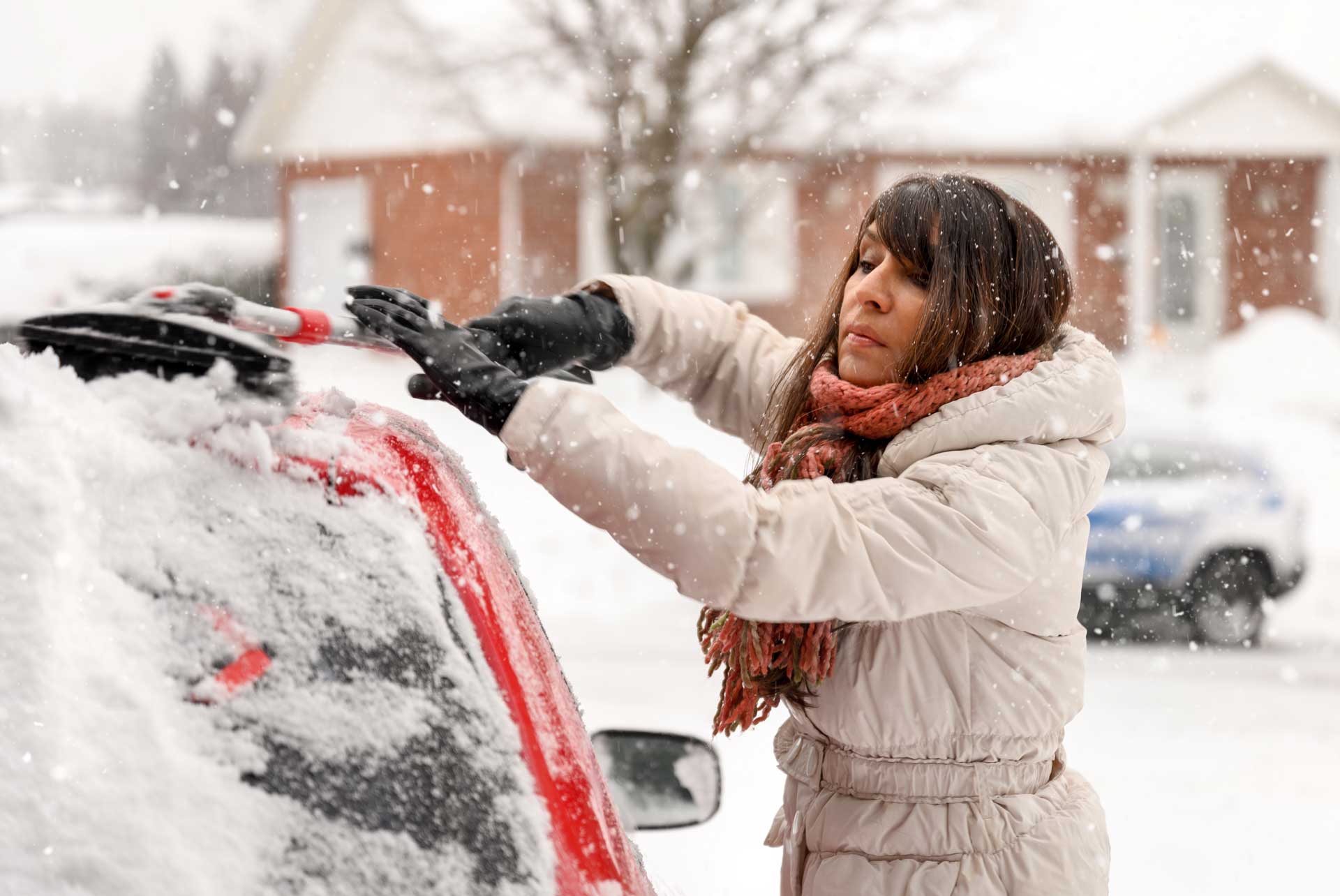
Winterizing Your Car
In the Chicagoland area and our shop location in Franklin Park in particular, wintertime and the weather it brings can be harsh on your vehicle. It’s always a good idea to be proactive and get your car ready for the winter conditions. Here’s a simple guide on how you can winterize your car.
- Replace the Wiper Blades and Wiper Fluid
With heavy sleet and snowfall, good visibility is a key to driving safely during the winter months. You should change your wiper blades every 6 to 12 months (or sooner if you live in a particularly rainy or snow-heavy climate). If you notice that your wiper blades sound squeaky or are leaving streak marks, you should change them sooner rather than later. On a similar note, you should always make sure to have a safe amount of wiper fluid. Driving on salty and slushy roads can make your windshield dirty and obstruct your view, so it’s never a bad idea to have a spare jug of wiper fluid during the wintertime.
2. Consider Using Winter Tires
If you live in an area that experiences heavy snowfall like Franklin Park and Bensenville, where our auto body shop is located, it’s a good idea to consider swapping your all-season or summer tires out for a set of winter-specific snow tires. Snow tires have tread patterns that are specifically designed to grip the road better when the road is icy, snowy, or slippery. While it’s an extra cost for the tires themselves (and the fees for changing the tires in and out when the winter season begins and ends), we believe it is well worth it if you regularly drive on slippery winter roads.
3. Check your Tire Pressure
Whether you’re using winter tires or all-seasons, be sure to check your tire pressure at least once a week during the winter. For every 10-degree drop in the temperature, your tires deflate by 1 psi in air pressure, leaving them susceptible to blow-outs and pothole damage. If there is a sudden overnight freeze and the temperature drops significantly, we recommend checking your tire pressure before you drive your vehicle that day.
4. Check your Battery
Your tires and exterior aren’t the only vehicle components that require winter maintenance and consideration. During the winter, the freezing temperatures thicken your engine’s oil, making it more difficult to get started. As a result, getting the engine started relies more upon the current generated by your battery. On top of that, your car battery does not operate at full capacity when the temperature is freezing (ideal battery operation temperature is 80 degrees fahrenheit), so it’s suggested that you get your battery tested by a mechanic before the cold weather really sets in. The mechanic will run a load test on the battery to ensure that it will operate under winter weather constraints.
5. Flush and Refill Your Coolant
You should get your coolant (also known as antifreeze) flushed every two years to avoid internal corrosion. If you haven’t had your coolant flushed within the last two years, be sure to do so before the winter starts. When you get the coolant refilled, be sure to adhere to your vehicle manufacturer’s recommended coolant to water ratio, which is typically 50/50. You don’t want the water portion of that ratio to go to over 50% because it makes the coolant susceptible to freezing.
There are many preventative maintenance precautions that need to be taken when there’s a change in the weather, especially the wintertime. If you have any questions regarding winterizing your vehicle, feel free to give us a call at (630) 526-7117.